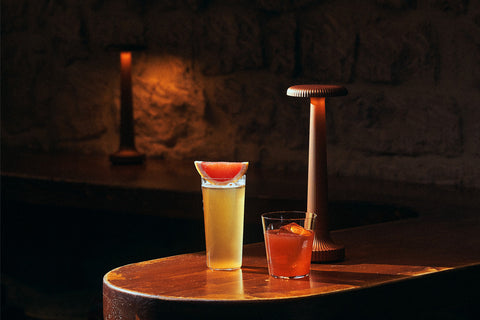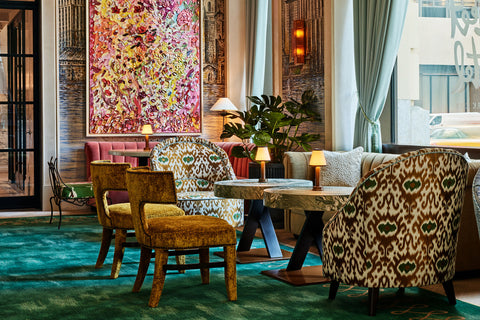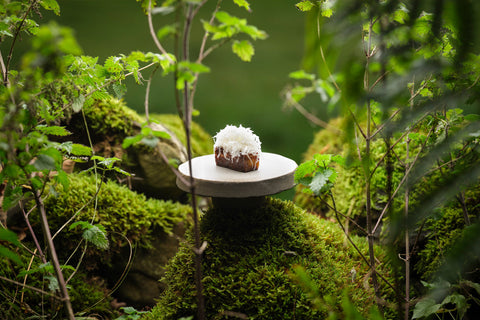Tucked discreetly away in Paris’s Marais district, Little Red Door has become one of the world’s most celebrated cocktail bars. Regularly featured on the annual World’s 50 Best Bars list, the venue is known not only for its inventive menus but also for its deeply immersive interior design, atmosphere, and sensory detail.
We spoke with co-owner Hyacinthe Lescoët about the philosophy behind the bar’s success and how lighting plays a central role in shaping each guest’s experience.

The red door that opens to a Cocktail Wonderland
Can you tell us a bit about how Little Red Door started?
Little Red Door started almost thirteen years ago, founded by two partners with a strong desire to build one of the most acclaimed bars in the world and to highlight French cocktail culture. Since then, the bar has gone through several creative cycles, with different head bartenders and managers each bringing their vision, but the guiding principle has always remained the same—playfully pushing boundaries. Little Red Door has always been a home for innovation and creativity.
For a bar that regularly features on the World’s 50 Best list, how important is interior design in creating and maintaining that level of experience?
Interior design is essential to building a guest experience. After being greeted at the door and meeting our host, the overall look and feel of the space is the first thing that impacts a guest’s impression. Lighting, materials, and tactility make the difference. The cocktails are almost secondary—hospitality, sensory details, and thoughtful design are what make you stand out.

The Piccolo cordless lamp, as featured at Little Red Door
What would you like to see more of when it comes to sustainability in hospitality—whether in how we design spaces or serve drinks?
At Little Red Door, we strongly believe in the power of data and transparency. We would love to see more bars that claim to be sustainable actually share their numbers. Beyond that, it is encouraging to see more venues incorporating sustainability into the physical build of the bar—not just the menus. Design choices matter, especially long-term ones.
Little Red Door creates such a rich sensory experience. How do elements like lighting and design support that?
Bars are often dark spaces. You can spend a great deal of time creating the perfect cocktail with the right glassware, served at the ideal temperature, but if the lighting is off, that effort gets lost. Working with NEOZ has helped us solve this challenge. When we place a cocktail on the table now, it creates a sense of desire. It becomes a visual moment.
What kind of mood are you aiming to create? And how do cordless table lamps contribute to that experience?
The mood evolves over the course of service, especially in a venue like ours. Guests arrive from the bright Parisian streets and step into a darker, more intimate space. But we always want the atmosphere to feel homey and comfortable. Guests should be able to relax—lighting helps with that.
Cordless table lamps are ideal for this. They allow guests to adjust their space—move the light for a photo, read the menu more easily, or reposition it for a more romantic mood. That small gesture of control adds something personal to the experience. For commercial real estate owners looking to differentiate their hospitality properties, these adaptable lighting solutions can be a compelling selling point that enhances both guest satisfaction and property value.

The Little Red Door Team
When in Paris
Little Red Door is located at 60 Rue Charlot, 75003 Paris, France.
They are open from 5 pm to 2 am every day.






